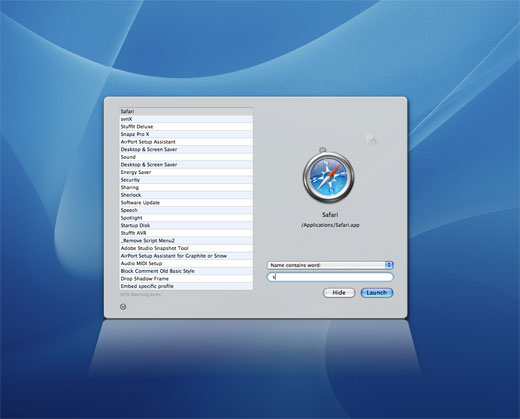Right, Snow Leopard has officially been released, so we can start talking about it..
Like many in the Macintosh community, I thought that “sometime in September” would mean.. sometime in September, so I felt that it was safe to go on holiday until the second of September and that would leave me plenty of time for a nice orderly rollout of Mac OS X 10.6… silly old me, of course it meant the 28th of August!? I’m not really sure what Apple stands to gain from this kind of exercise, but it sure doesn’t make it easy for third party developers.
The good news is that I have tested all current products including A Better Finder Rename, A Better Finder Attributes, “The Big Mean Folder Machine” and MacBreakZ with the latest beta release, which rumor has it is the gold master of what appears on the shelves today and it’s all running just fine.
A Better Finder Attributes displays some odd behaviors on certain file date changes which I’m fairly certain are due to actual bugs in Snow Leopard. I’ll report them to Apple when I get back to the office next week. The workaround is simple: click on the “OK” button twice and everything is fine.
Snow Leopard also appears to no longer allow the creator part of the creator & type legacy codes to be set!? This isn’t a great loss since creator & type codes have been on their way out ever since 10.1 came out and the creator part is arguably of less relevance than the type part. I’ll investigate.
A Better Finder Rename runs just fine with no problems at all, so assuming that the beta I had was indeed the Gold Master, it should be smooth rollout.
“The Big Mean Folder Machine” and MacBreakZ have displayed no problems at all.
Of course, once you put a new operating system into the hands of a couple of million actual users, inevitably quirks are discovered, so please let me know immediately if you find something. I can only fix problems that I know about..
One more thing..
How to get the Finder context menu on Snow Leopard
Snow Leopard finally does away with contextual menu item plug-ins, which is definitely a good thing. This ancient technology is replaced with “Services”.. you know that weird menu that appears in every application’s menu bar and you have no idea of what it does.
The gotcha here is that you need to activate the A Better Finder Rename and A Better Finder Attributes services to actually see them in the Finder context menu or the new streamlined Services menu.
- A Better Finder Rename and A Better Finder Attributes now definitely need to reside in your Applications because that is where Snow Leopard looks for “Service Providers”.. so if you have them installed somewhere else you need to drag them into the proper folder now.
- go to the Finder, open the “Finder” menu and select “Services Preferences…” from the “Services” menu
- in the Services Preferences tick the A Better Finder Rename 8 and A Better Finder Attributes 4 items
Voila.
If the items don’t appear in the Services Preferences, you might need to
- launch A Better Finder Rename 8 once
- and if that doesn’t work, log out and back into your account/ reboot
The reason for this complication is that the Finder only finds new services when it starts up. A Better Finder Rename 8 nicely asks the Finder to update its services list when it starts up , but it’s only a request..
I wish you all a good transition..
Frank
